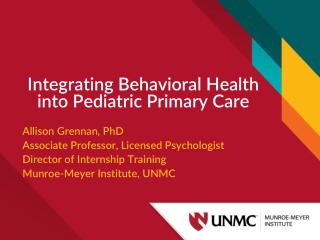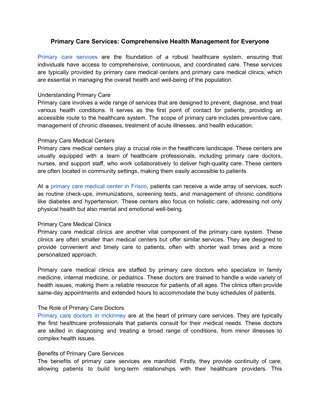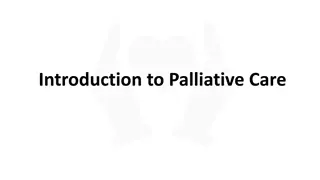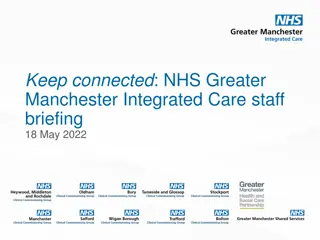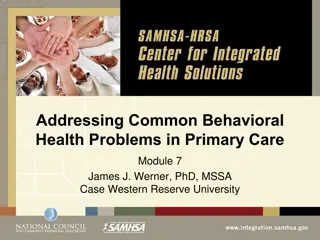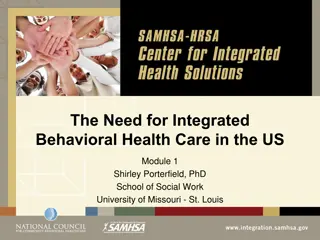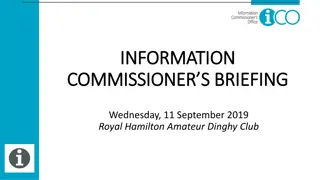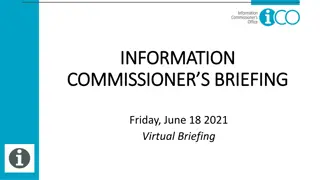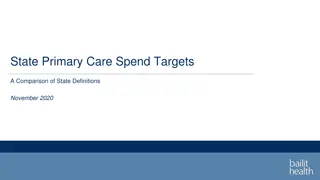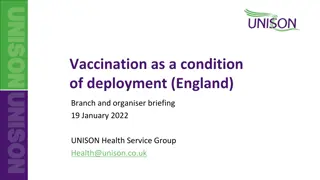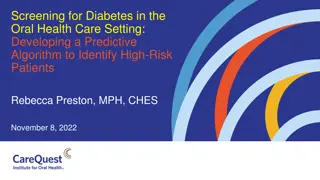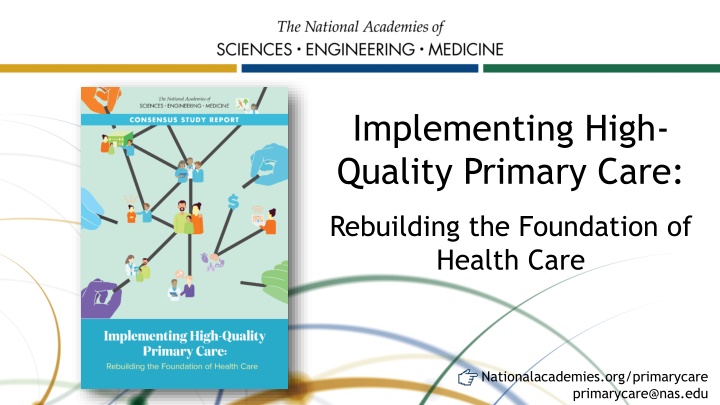
Enhancing Primary Care Services for Underserved Populations
This study by the National Academies of Sciences, Engineering, and Medicine aims to revitalize primary care in the United States, especially for underserved communities, by building upon recommendations from a previous report. It involves a diverse committee of experts and is sponsored by various healthcare organizations. The goal is to strengthen primary care systems globally through an implementation plan that addresses current challenges and inequities.
Download Presentation

Please find below an Image/Link to download the presentation.
The content on the website is provided AS IS for your information and personal use only. It may not be sold, licensed, or shared on other websites without obtaining consent from the author. If you encounter any issues during the download, it is possible that the publisher has removed the file from their server.
You are allowed to download the files provided on this website for personal or commercial use, subject to the condition that they are used lawfully. All files are the property of their respective owners.
The content on the website is provided AS IS for your information and personal use only. It may not be sold, licensed, or shared on other websites without obtaining consent from the author.
E N D
Presentation Transcript
Implementing High- Quality Primary Care: Rebuilding the Foundation of Health Care Nationalacademies.org/primarycare primarycare@nas.edu
Committee Members Linda McCauley, Emory University (Co-Chair) Asaf Bitton, Ariadne Labs Tumaini Coker, University of Washington School of Medicine and Seattle Children s Carrie Colla, Geisel School of Medicine at Dartmouth Molly Cooke, University of California, San Francisco Jennifer DeVoe, Oregon Health & Science University Rebecca Etz, Virginia Commonwealth University Susan Fisher-Owens, University of California, San Francisco School of Dentistry Jackson Griggs, Heart of Texas Community Health Center, Inc. Robert Phillips, Jr., American Board of Family Medicine (Co-Chair) Shawna Hudson, Rutgers University Shreya Kangovi, University of Pennsylvania Christopher Koller, Milbank Memorial Fund Alex Krist, Virginia Commonwealth University Luci Leykum, University of Texas at Austin Mary McClurg, Eshelman School of Pharmacy atUniversity of North Carolina at Chapel Hill Benjamin Olmedo, Dignity Health Brenda Reiss-Brennan, Intermountain Healthcare Hector Rodriguez, University of California, Berkeley Robert Weyant, School of Dental Medicine at University of Pittsburgh NAM Fellows: Kameron Matthews, Lars Peterson, Dima Qato Staff: Marc Meisnere, Sharyl Nass, Tracy Lustig, Sarah Robinson, Samira Abbas
Committee Expertise Clinicians including physicians (family medicine, internal medicine, pediatrics), nurses, dentist, pharmacist, physician assistant Community health worker program Executive Director Health center CEO State and federal health policy experts Economist Medical and cultural anthropologists Sociologist
Study Sponsors Agency for Health Research and Quality American Academy of Family Physicians American Academy of Pediatrics American Board of Pediatrics American College of Physicians American Geriatrics Society Academic Pediatric Association Alliance for Academic Internal Medicine Blue Shield of California The Commonwealth Fund Department of Veterans Affairs FMA Health Health Resources and Services Administration New York State Health Foundation Patient-Centered Outcomes Research Institute Samueli Foundation Society of General Internal Medicine
Statement of Task NASEM committee will examine the current state of primary care in the United States and develop an implementation plan to build upon the recommendations from the 1996 IOM report, Primary Care: America's Health in a New Era, to strengthen primary care servicesin the United States, especially for underserved populations, and to inform primary care systems around the world.
The Committees Process 5 meetings, a webinar, and many conference calls 3 public information-gathering sessions 3 commissioned papers: the historical evolution of primary care; the effects of the pandemic; and payment reform Literature review (~6,000 articles) and synthesis of findings and conclusions Recommendations driven by consensus External peer-review by 16 experts in variety of disciplines
Study Context Primary care is only part of health care system that results in longer lives and more equity. It is weakening in the U.S. when it is needed most. Systems, localities, and states have had success implementing high- quality primary care.
Visits vs Expenditures in Medical Care 40% 35% 35% 35% 30% 26% Volume of those who seek medical care 25% 20% 17% 15% 10% Expenditures 5% 5% 3% 0% Primary Care Specialty Care Hospital (inpatient) SOURCES: Johansen et al., 2016; Martin et al., 2020 All categories are not included in the figure and thus do not add up to 100 percent.
Study Context Share of total health care spending on primary care is decreasing in majority of states COVID-19 pandemic amplified economic, mental health, and social health inequities Exacerbated access to care problems and financial pressures on practices Some meaningful policy changes, including relaxation of telehealth rules SOURCES: Johansen et al., 2016; Martin et al., 2020
An Updated Definition of Primary Care High-quality primary care is the provision of whole- person, integrated, accessible, and equitable health care by interprofessional teams that are accountable for addressing the majority of an individual s health and wellness needs across settings and through sustained relationships with patients, families, and communities.
Primary Care as a Common Good Primary care has high societal value among health care services yet is in a precarious status Requires public policy for oversight and monitoring Needs strong advocacy, organized leadership, and public awareness
The Committees Implementation Plan System View Accountability Policy Window Target recommended actions to 3 levels of U.S. health care Establish unified body for oversight and assessment Health Equity Behavioral Health/opioids Create public scorecard to track progress Need for strong federal function COVID-19 pandemic recovery
Actions Since Five workshops on each report objective (all recorded on website), 6th in October Featured key stakeholders including former HHS Secretary Independent presentations CMS, CMMI (6 overall), AHRQ, HRSA, ASPE House and Senate committee staff Gates Foundation, PCC, Harvard Primary Care Consortium AAFP, ADFM, STFM, NAPCRG Several payer groups
Actions Since Working with OASH, HHS Agencies, Philanthropy to establish a Secretary s Council for Primary Care and creation of up to 3 staff to support Payment reform discussions: federal, payers, health systems; Koller, Pham, Berenson leading discussions Last NASEM workshop to focus on funds reaching primary care
Download the report and view more resources at: Nationalacademies.org/primarycare Questions? E-mail primarycare@nas.edu

